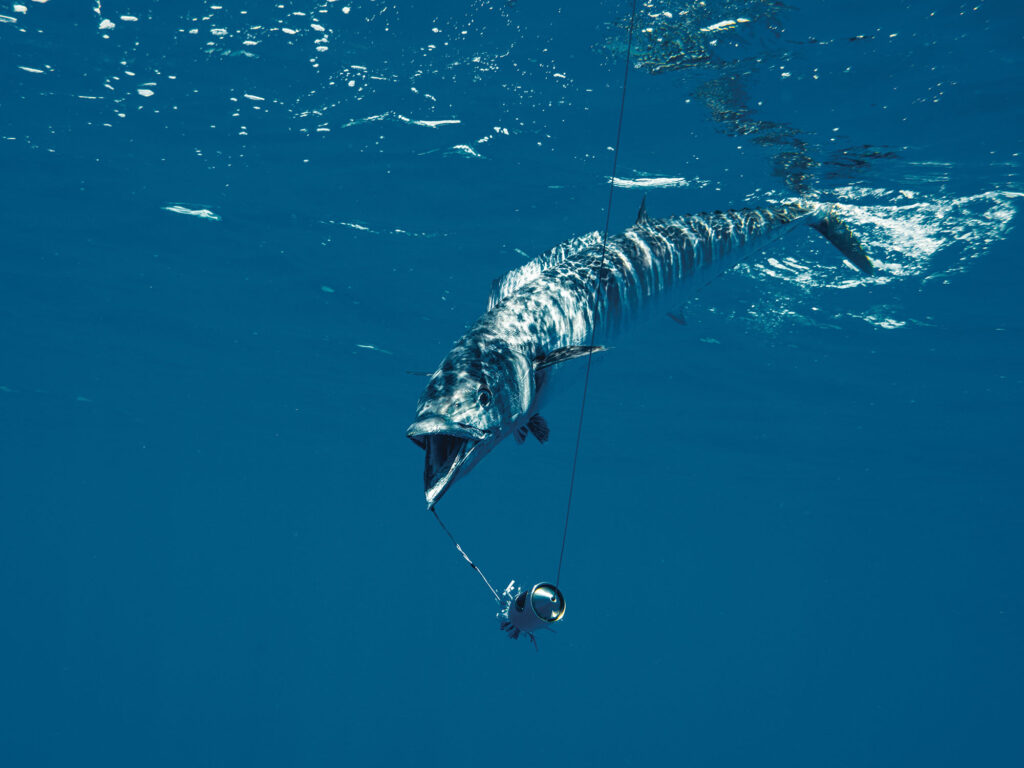
With an economy of words, Capt. Mike Dupree sums up the appeal of wahoo: “It’s the baddest fish in the ocean,” says the skipper based out of Harkers Island, North Carolina. The one characteristic of wahoo that accounts for that reputation, in the minds of enthusiasts, is speed.
Capt. Kevin Beach, a well-known offshore runner out of Venice, Louisiana, has an additional take on wahoo. “The wahoo is one of my favorite fish in the world to catch,” he says. “Why? Two things: speed and chaos. The wahoo’s run is faster than any tuna. In my opinion, only a blue marlin compares, but you don’t generally have multiple blues on at once.” And with wahoo, he says, multiple hookups spell welcome chaos.
So, how fast can wahoo swim? The most widely cited figure is 48 mph, which seems reasonable—only slightly less than the sailfish. A figure of 60 mph shows up in some internet searches, but that’s probably optimistic. In any case, an angler’s line screaming off a spool anywhere near 50 mph on a run that might last hundreds of yards is definitely badass.
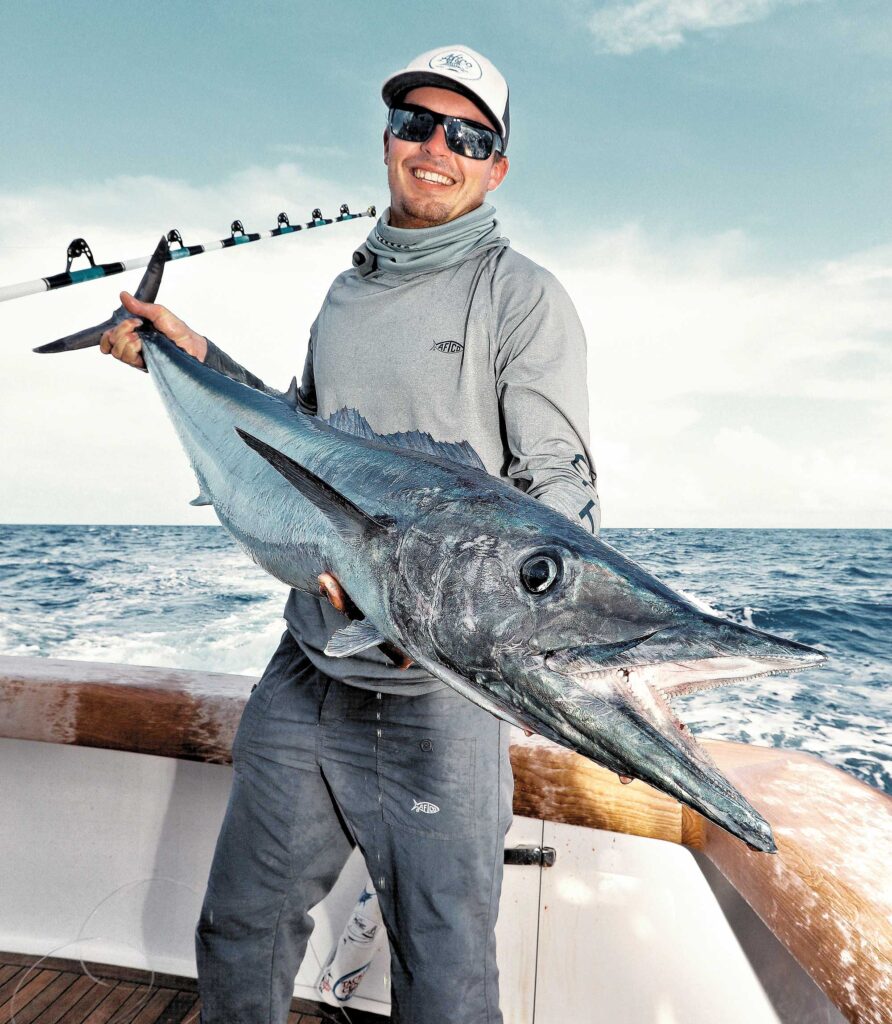
Fast-Growing Mackerel
The wahoo resembles a mackerel because it is one; its genus Acanthocybium includes the single species, solandri, and is part of Scombridae (the tuna and mackerel family). Found in all the world’s tropical and warm-temperate seas, the wahoo is a prize recreational catch throughout its range. Its commercial importance is limited because wahoo are hard to target in large numbers. As a result, the recreational harvest of Atlantic wahoo in US waters is considerably greater than the commercial catch.
According to NOAA, “Atlantic wahoo—considered to be ‘sustainably managed’—can handle relatively high fishing rates, but precautionary management seeks to maintain current harvest levels.” The species’ rapid growth also helps its population status. At one year, they weigh 15 pounds; by the third year, expect a weight of about 60 pounds. Wahoo seldom live beyond five or six years.
Wahoo are sought for the excitement of the strike and fight, and because they’re one of the best-eating fish in the ocean. The daily limit of two per day in federal waters, as well as state waters off Florida and North Carolina, reflects the importance of wahoo as a recreational target. However, in other states—notably Texas, Louisiana and Georgia—anglers can bring home as many wahoo as they catch.
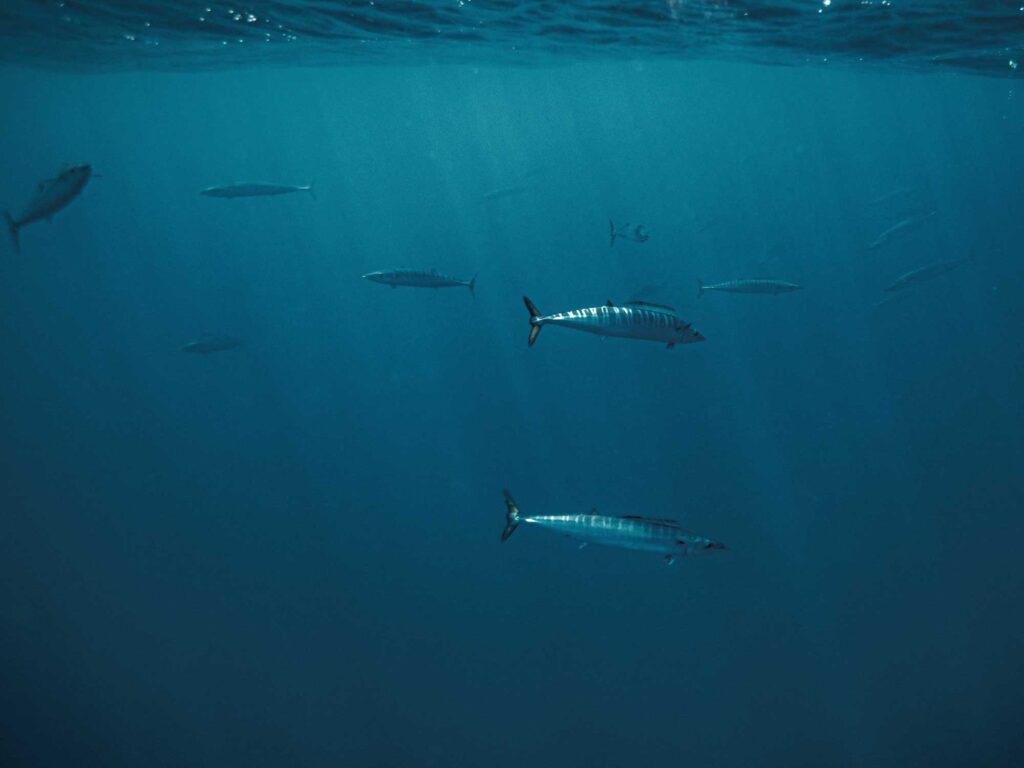
Hundreds of ’Hoos
Common wisdom says that while smaller wahoo might school up, bigger fish are mostly solitary. That wisdom needs an update, say experts such as RJ Boyle, owner of a renowned tackle shop in Lighthouse Point, Florida. He’s a daytime swordfishing pioneer and one of the world’s foremost experts on rigging for and catching wahoo.
“Divers in the waters here off southeast Florida tell me it’s amazing how many wahoo are actually schooled up, often over wrecks or structures, maybe 100 feet down,” he says. “Those schools can number hundreds of fish!”
There’s no doubt that wahoo do like to patrol over areas of structure, but they also swim along edges, ledges, seamounts and drop-offs. Flotsam afloat in blue water often attracts wahoo. These might be smaller school fish, but there can be loads of them. In the deeper water below, sometimes the big boys prowl.
Large schools of ’hoos in the eastern Pacific off Baja are legendary. Long-range boats find them by trolling, then they immediately “slide” into a drift so anglers can cast lures for multiple hookups. Toby Larocque, at Mag Bay Lodge, says his anglers use the same technique—trolling to find fish, then stopping to cast to them.
I’ve trolled through big packs in several areas, such as the steep slopes of volcanic islands in the Andamans, where time and again five out of five rods would go off. (As Beach calls it, chaos!) Ditto off western Australia.
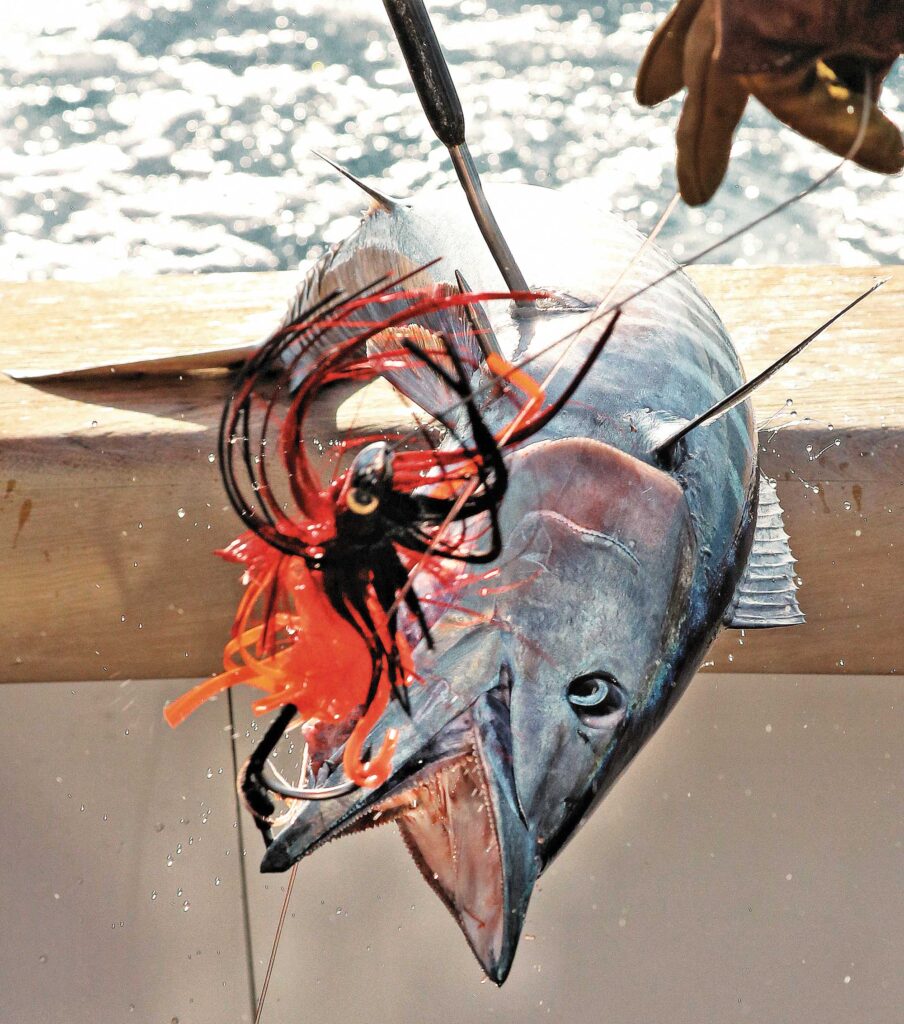
Conditions count
Without a doubt, wahoo can be seasonally available in some areas. But in other hotspots, wahoo will be there year-round. Anglers should be cognizant of their water temperatures; wahoo tend to stay in the range of 64 to 81 degrees, preferably in the middle.
Winter months are prime time in many of the Atlantic’s better wahoo regions, such as Louisiana, South Florida and the Keys, and in the Bahamas. Late fall can offer memorable wahoo action off North Carolina, while late summer to early fall generally produces the best bites off Baja.
Any angler serious about putting wahoo in the boat will be on grounds at first light or at dusk. “Be fishing the minute the sun rises,” Larocque says. “Here, wahoo eat until 11 a.m. After that, we fish for marlin, tuna and dorado.”
However, Capt. Ryan Van Fleet, out of Tavernier in the Florida Keys, says savvy anglers will target wahoo during the day when heavy cumulus clouds block the sun. That creates another light transition period when baitfish become more vulnerable and mid-water predators like wahoo feed more actively.
Many pros fish hard during the optimal moon phase, typically four or five days before and after a full moon. That’s when Dupree fishes structure in 200 to 250 feet for wahoo.
Boyle favors a steady barometer for wahoo, ideally just before it starts to drop. Wahoo feed heavily then, but that slams to a halt when the barometer starts dropping. “Once it stabilizes, you’ll see the bite pick up,” he says.
Mid-Atlantic skippers such as Dupree do their diligence on ocean-forecasting sites, watching warm-water eddies swirling north in their direction via the Gulf Stream. He says odds are good you’ll get wahoo action if you find eddies in the right depth. Color changes and temperature breaks offer good cover for wahoo. (Though Dupree has had better luck in what he calls “soft breaks” versus dramatic change lines.)
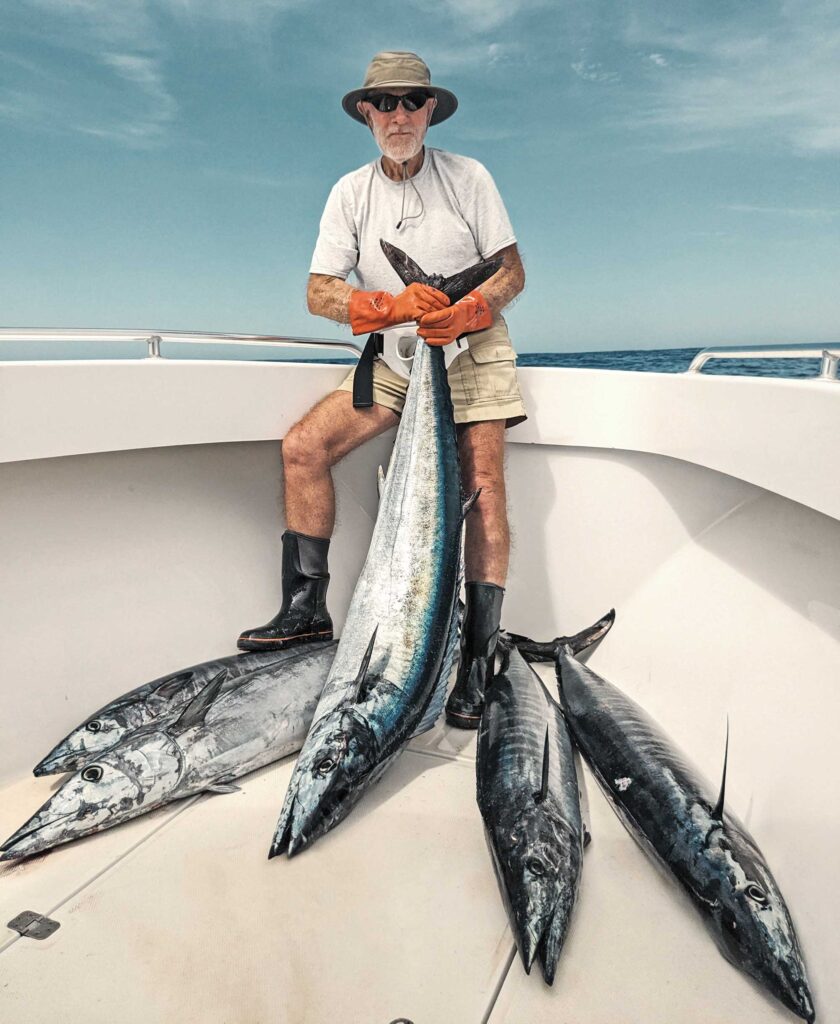
Professional Strategies
Beach offers the single word that sums up the behavior of wahoo for him and many experts: unpredictable.
“One day, we’ll mark five wahoo and get five bites,” he says. “The next day, we might mark 400 fish and get two bites.”
Beach recalls fishing a current out of the west with a 5-knot wind one day, finding wahoo that were “biting everything.” The next day, he says, they couldn’t generate a bite fishing the same area in the same conditions. “So we ran 20 miles, and the bunch of wahoo we found there were biting.” He cites finding wahoo keyed in on eating small bonito, yet they seemed to much prefer eating hardtail (blue runner) baits. And so it goes with wahoo.
The list of techniques that experts employ to catch wahoo is extensive:
- High-speed trolling with high-speed lures or blue-and-white Ilanders with horse ballyhoo
- Moderate-speed trolling with big-lipped diving lures, such as Rapala, Halco, Yo-Zuri and Nomad
- Slow-trolling live baits, such as blue runners, goggle-eyes and threadfins
- Trolling with downriggers or detachable planers
- Casting jigs or heavy “wahoo bombs” and retrieving them at high speed
- Dropping jigs deep and retrieving them at high speed
Most pros have their favorites. Beach relies on various techniques to take ’hoos, but his go-to technique calls for trolling a mixed spread, starting with Ilanders and ballyhoo at 7 knots, then adding deep-diving lipped plugs. (He’ll run more lines when fishing clear, cobalt-blue water than in the more opaque water from Mississippi River runoff, when he might run four deep lines.) Echoed by other pros, Beach advises trollers to keep going when they hook up. Or they should at least resume trolling quickly to take advantage of the wahoo they’ve located, especially if the fish are in a biting mood.
Boyle is a planer guy, by and large. “Wind-on planer fishing at 9 knots is the up-and-coming way here, though many anglers aren’t yet aware of that approach.” The planer trolls the lure or bait deep, while the quick release at the strike allows the angler to fight the fish without any great resistance from the planer.
Read Next: Nine of the Greatest Wahoo Ever Caught
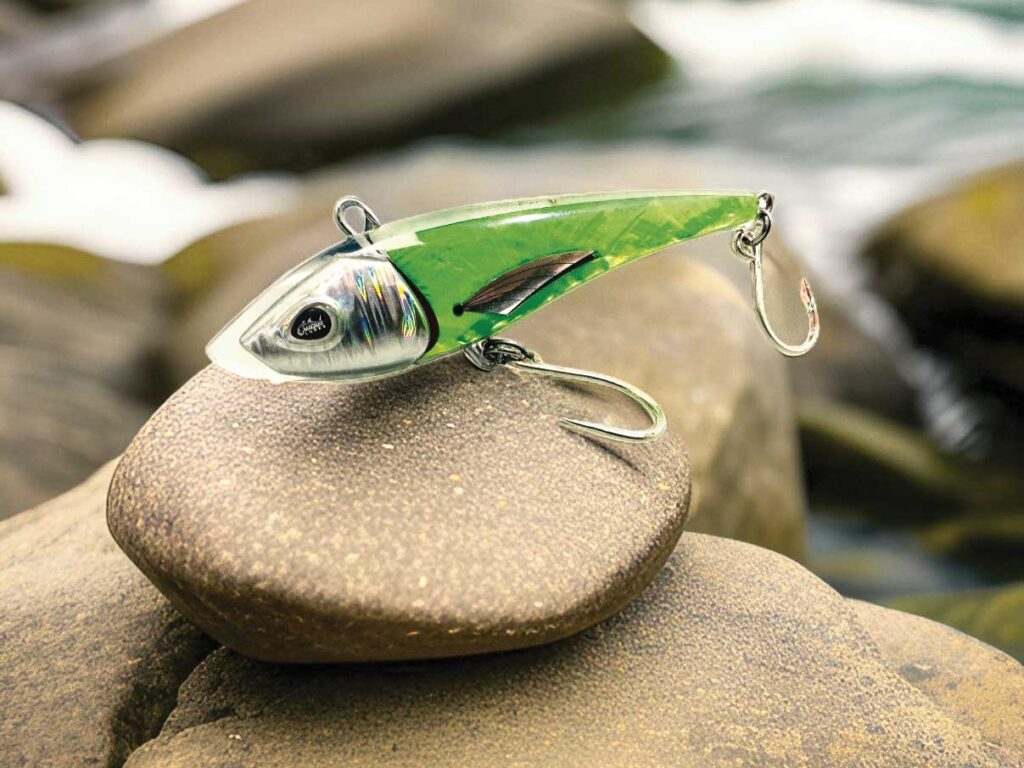
Boyle’s considerable wahoo success derives largely from pulling bonito strips on those planers. “That’s our No. 1 bait—an extra-large bonito strip, say 12 to 18 inches, that we have salted in brine to make them really tough to hold up in fast trolling.” He rigs the strips on a very long (6- to 7-inch) stainless planer hook on a swivel with 60-pound fluoro (no wire), putting a Mylar skirt and a Sea Witch skirt over the hook. (Rig it from scratch, or get a wind-on planer kit complete at rjboylestudio.com or from major tackle dealers.)
Dupree says, “Most of us are slow-trolling dead bait for wahoo, along with deep-diving plugs such as a Halco 220 Max at 6 to 8 knots.” He’ll bump up to 9 to 11 knots only with plugs.
He adds: “We set ’em way back. I’ll put a short corner right off the stern, but others I set 300 to as much as 500 feet back. I want the baits in the cleanest, most perfect water possible.” Besides seeing the bait better, the visibility helps the fish eat the entire bait, Dupree says. He fishes 100-pound braid on a 50-wide with a mono top shot to No. 9 wire. At times he’ll fish planers as well, “so we’re fishing the top 40 to 60 feet of the water column,” he says.
Larocque not only puts anglers on fish off Magdalena Bay, but he also designs and manufactures lures. He favors high-speed trolling (14 to 19 knots) to find the ’hoos, using MagBay’s MagTraks and Desperado lures. Several manufacturers offer similar high-speed lures, but that’s only to find the wahoo so he and his anglers can start casting wahoo bombs and jigs. The high-speed retrieves lead to absolutely arm-wrenching strikes from these barred speedsters. His favorites to throw are the MagBay RM5 and RM9 (rigged with 80-pound mono). These solid-resin lures cast a long distance, sink fast, and swim enticingly when cranked back as fast as possible.
The bottom line for wahoo, Beach says: “Pay attention to what works, and don’t be afraid to try anything.” He recalls finding “a pile of wahoo on the sounder,” and putting live bonito and hardtails in front of them. “Not a bite. Finally, we tried dropping vertical jigs and started really catching them!” As the captain said earlier, wahoo are, above all, unpredictable.









